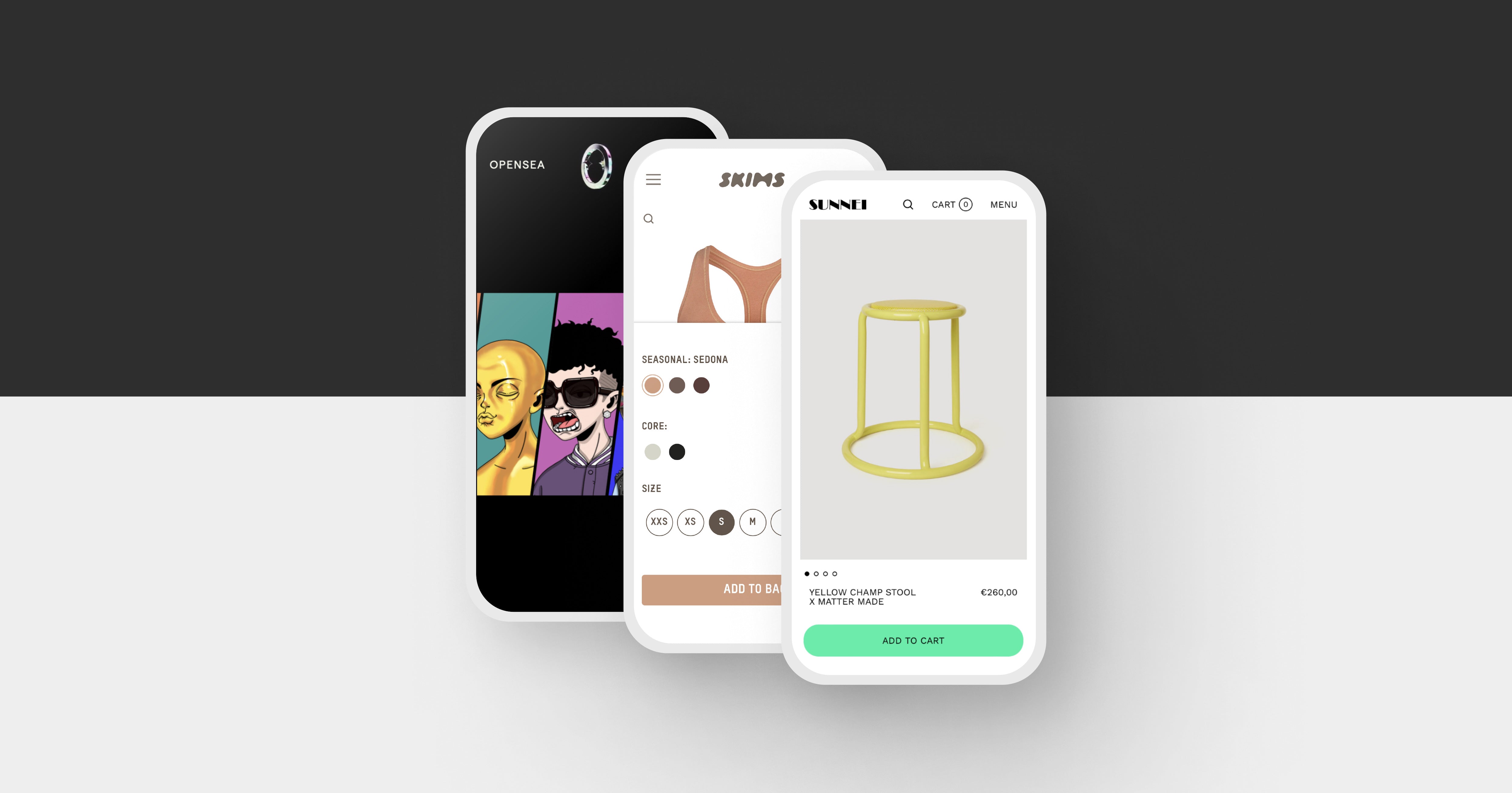E-commerce trends and tools for 2022
E-commerce is growing and fast. And with it comes many changes and challenges — brought on by things like the onset of a global pandemic, the rise of cryptocurrencies as a payment method, and increased sales on mobile devices. Thriving in this ever-evolving landscape requires future-proof strategies. Luckily, we've put together a few tools and trends to help you stay ahead of the competition.
But first, a bit of context.
A new era for e-commerce
The growth of webshops has made it easier than ever to sell and buy online. With an estimated 12-24 million webshops globally and the number growing daily, more retailers are having difficulty grasping consumers' attention — that's why branding has never been more critical. In an overly crowded space, building trust and loyalty is key. A strong brand will have a well-crafted identity, create awareness to attract and retain consumers, grow their organic acquisition, and afford to raise their prices — a powerful tool any business can leverage to maximize profits.
The rise of social commerce
Social commerce is proving to be an effective way to engage directly with customers, allowing them to shop directly on their preferred platforms like Instagram, Snapchat, or TikTok. According to Shopify, with 60% of consumers using social media to find new products, sales on social platforms are expected to triple by 2025. It's an excellent opportunity for brands to reclaim and own their narrative and relationship with consumers. And, when paired with features like live shopping experiences, video, and influencer collaborations, the tradeoff is limitless.
Now for the best part. Here are a few tools to help future-proof and grow your e-commerce business:
1. Create consistent brand experiences across channels
Your brand narrative, what you stand for, and how you choose to communicate will be the main differentiator between you and your competitors. Creating unique brand experiences available to consumers wherever they are will elevate your brand values and unique selling points. And, don't forget — stay consistent.
2. Leverage custom storefronts to create innovative experiences
With custom storefronts, you can develop new and unique buyer experiences from web to video games. Essentially, you’ll be creating new channels to drive engagement with your consumers. Plus, you’ll have complete flexibility in the frontend and backend of your webshop. The result is endless commerce possibilities with a ton of creative freedom. Shopify offers a range of options to customize your storefront from AR, gamified checkouts to virtual-try-on. Tap into a great example by Sunnei, here.
3. Build a community
To build and strengthen brand loyalty, many are looking to community building or brand communities — groups of customers who feel a sense of shared values and traditions with the brand, beyond what is sold. They live and breathe your brand. This connection helps drive brand awareness and lower costs on customer support.
Naturally, you'll want to reward your dedicated customers. Whether that's personalized experiences like NFTs (non-fungible tokens) or specific platforms offering benefits and awarding points in exchange for on-site activity — loyalty programs are a great way to foster a sense of exclusivity, connection, and belonging among your customers.
LoyaltyLion is the go-to when you're looking to enhance your loyalty programs. That's why we've partnered with LoyaltyLion to make attracting and retaining customers easier for our merchants. But, It's about more than just points and rewards. With LoyaltyLion, you'll get valuable data to understand what drives longer-lasting customer relationships.
Coupled with a platform like Shopify, the upside is the functionality to create communities across multiple channels. Thanks to their integrated platforms, you’ll be able to sell wherever your customers are, manage and analyze your channels all in one place. And, if you're a Shopify Plus merchant, you can easily sell NFTs in your storefront.
Daily Paper’s nailed the hype of community building with the launch of collectible avatars that unlock exclusive drops and events from the brand. Get into their latest venture with NFTs here.
4. Opt for a mobile-first approach
Like it sounds, it's the concept of designing for mobile screens first and scaling up for larger screens later. Mobile-first design is a content-first approach. With limited space, you'll need to prioritize content focused on your brand and customers. The final design is simple, seamless, translatable across platforms, and more user-friendly.
5. Drive sustainability and ethical practices
Brands that are transparent about their sustainability efforts, such as carbon footprint, have seen a spike in sales. Considering that a growing number of consumers are looking to more sustainable and ethical fashion and e-commerce brands, that's no surprise. This also includes environmental and human rights issues. Consumers care, so it's worth exploring opportunities to adopt sustainable and ethical measures.
What's next? No one knows, but one thing is sure: the future of e-commerce is upon us.










